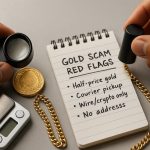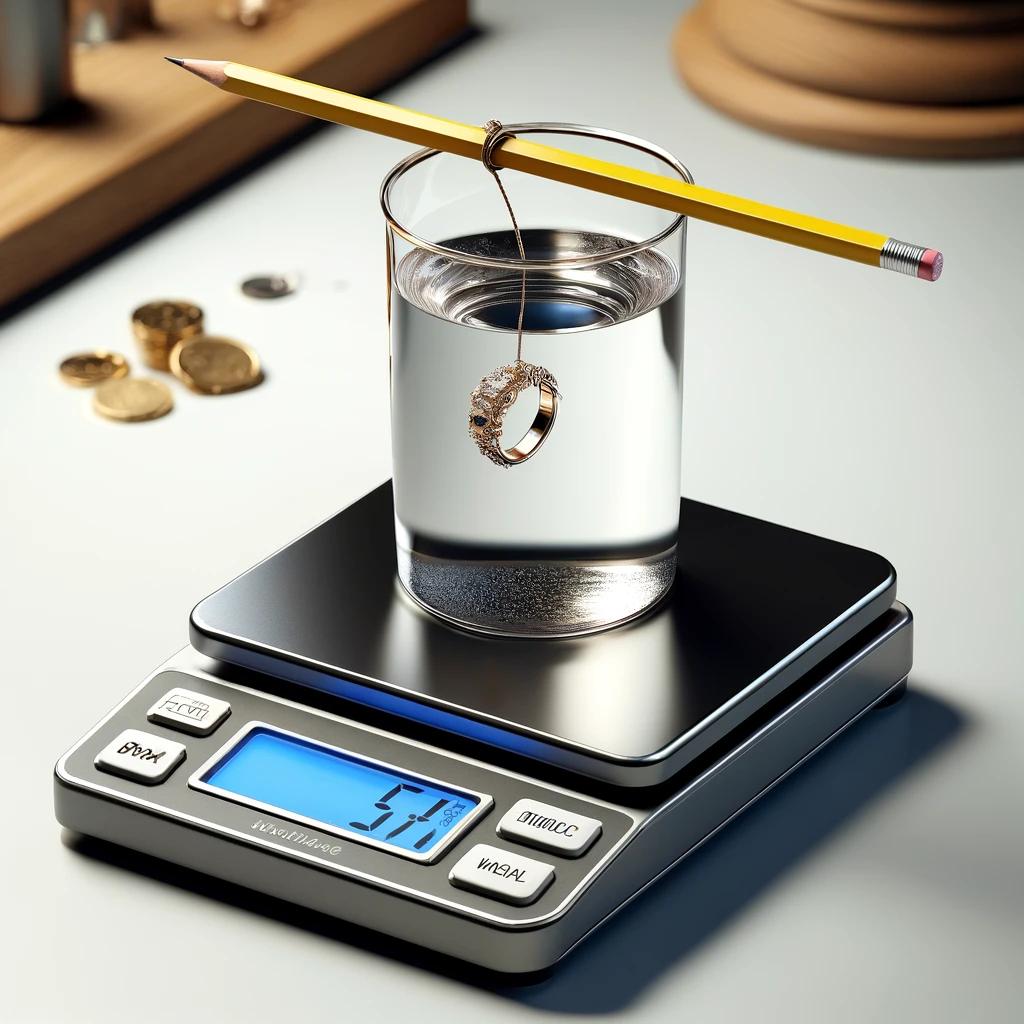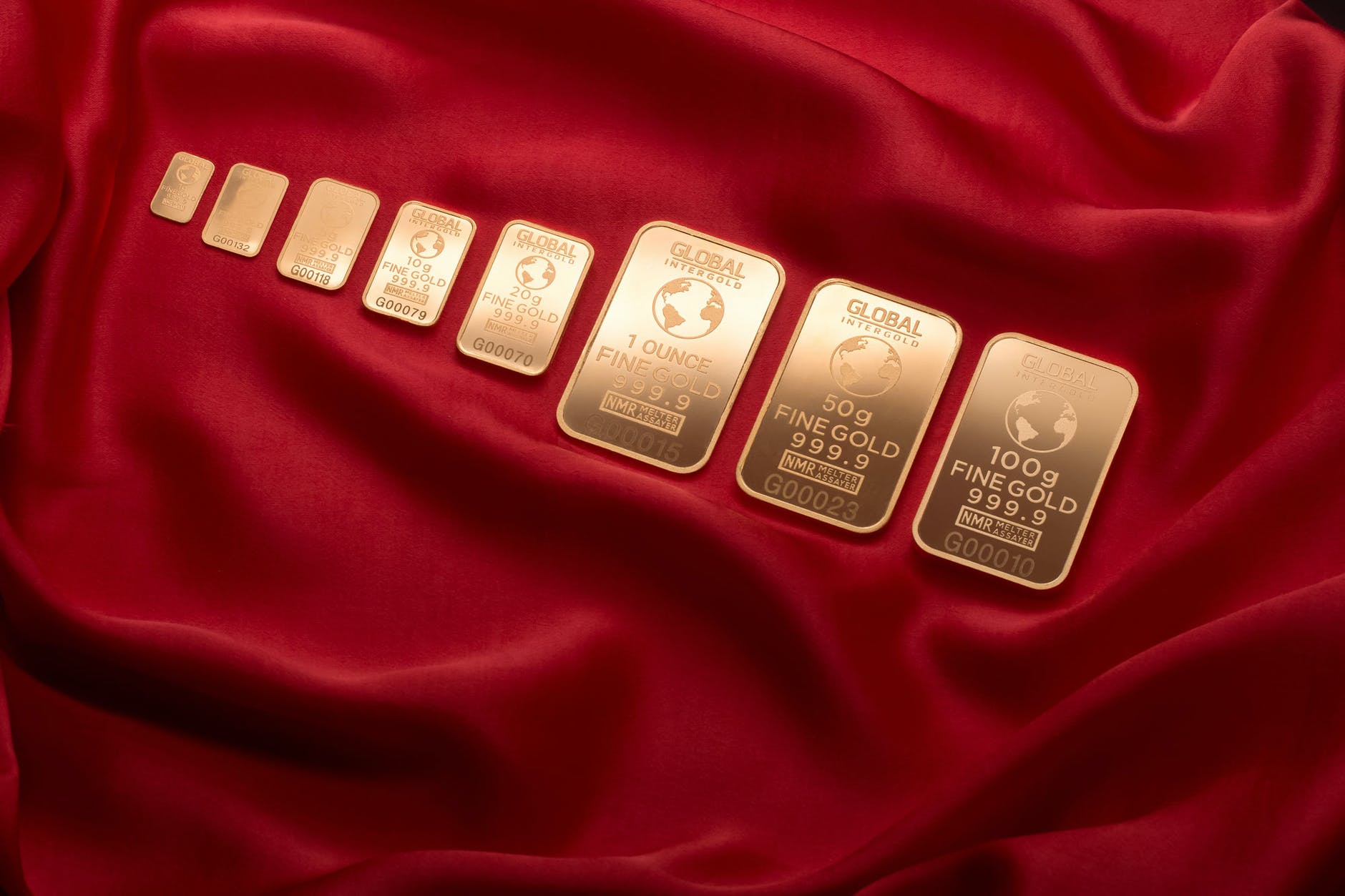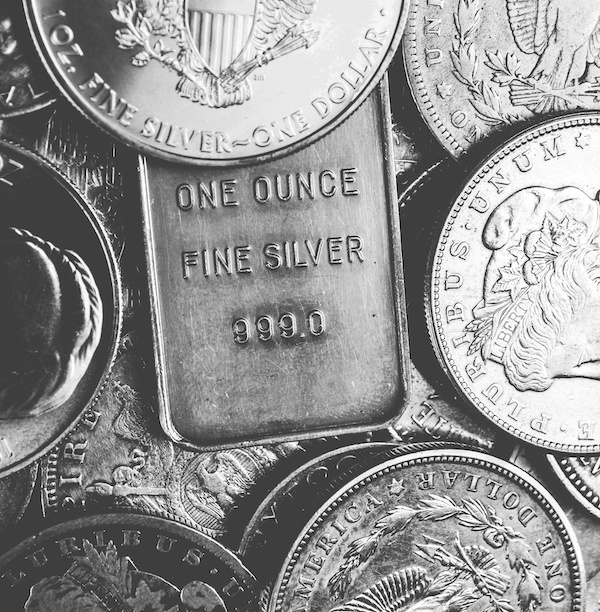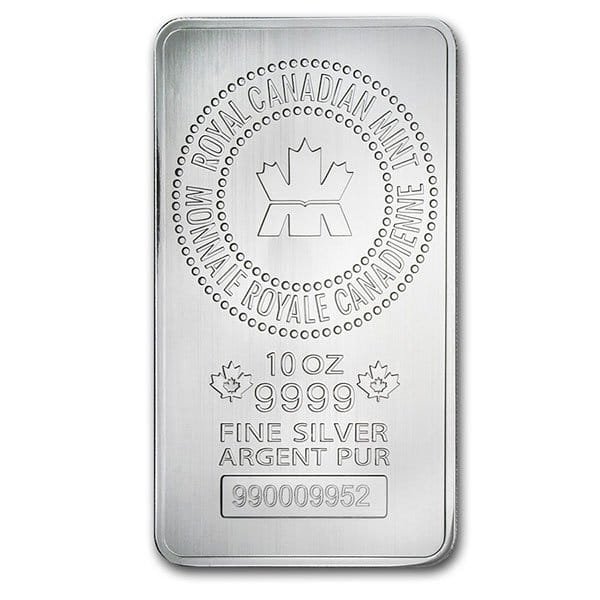With the rise of trading through social media and other online marketplaces, it’s important to note the prevalence of fake coins and bars on the market.
Testing can help protect you from scams and ensure that the silver item you have is indeed made of genuine silver and not a counterfeit or an alloy.
Silver bullion is a popular investment choice for portfolio diversity, as a hedge against inflation and high interest rates, or simply as a savings account or store of value.
As with other investments, verifying that you have genuine silver is a normal part of the due diligence.
You can perform most of the methods described here at home with simple and inexpensive tools you may already own.
These tools allow you to quickly and easily verify silver for purity and determine if any suspicious items in your stack are not genuine.
Ice Melt Test
The ice silver testing technique involves placing a piece of ice on the surface of the silver bullion. The ice should melt quickly and evenly across the surface. If the ice melts unevenly or leaves spots or blemishes on the surface, it may indicate that the bullion is not pure silver.
Pure silver has a high thermal conductivity, which means it can transfer heat quickly and evenly across its surface.
When you place ice on refined silver, the heat from the silver rapidly melts the ice, creating a thin layer of water across the surface. If the silver is not pure, it may have a lower thermal conductivity, which can cause the ice to melt unevenly or leave spots on the surface.
While the ice test can be a helpful way to verify the authenticity of your silver bullion, it’s important to note that it is partially foolproof. Other metals have a high thermal conductivity and could pass the ice test even if they are not pure silver.
Additionally, some counterfeiters have figured out ways to thicken the silver plating on some fake bullion coins that can pass the ice test.
It’s an excellent recommendation to use multiple methods to test silver bullion beyond checking for hallmarks or engravings, such as accurately measuring its weight and dimensions or performing a magnet test.
If you have doubts about the authenticity of your bullion, another option is to befriend your local coin shop and have it examined by a professional before making any investment decisions.
Magnet Test
Verifying silver can be made much simpler with the use of neodymium magnets.
Neodymium magnets are among the most powerful permanent magnets, capable of producing a high magnetic field. When placed close to a piece of silver bullion, they can effectively verify its authenticity.
Silver is non-ferrous, which means that it is not magnetic. If the silver is genuine, the magnet will not stick to it but slide down the piece at an angle, showing some slight resistance.
However, if the magnet sticks to the bullion, it will likely be a counterfeit metal alloy or plated material.
This is because most of the metal alloys used to fake silver bullion, such as copper, brass, or nickel, are magnetic and will, therefore, attract the magnet.
You should use this method along with other forms of testing silver bullion, such as weight and visual inspection, as this can be unreliable with some pieces. However, using neodymium magnets can provide more confidence when investing in silver bullion.
You can buy a set of tiny neodymium magnets from Amazon for under $10.
Measuring with a Precision Scale
A very affordable accessory is a high-quality precision scale for precious metals that is accurate to at least 0.01 grams and measures in troy ounces.
A scale allows you to weigh the bullion accurately and determine its weight in grams or troy ounces.
Once you have an accurate weight, you can compare it to the manufacturer’s stated weight and note any variances. When measuring in fractions of a gram, there are likely to be some variances in weight, even between silver rounds of the same manufacturer and design.
In addition to weighing the bullion, you can use a scale to help measure its density with the Water Displacement test.
Test Silver With Water Displacement
Water displacement is a technique that measures the volume of an object submerged in water and the amount of water it displaces.
This method can be used to verify the weight and density of silver bullion at home. It involves filling a container with water and using a precision scale.
The container should be large enough to submerge the silver bullion completely.
First, the weight of the silver bullion is measured using a scale. Next, you immerse the bullion piece in the water inside the container and measure the volume of water displaced.
The weight of the silver bullion is then divided by the volume of water displaced to determine its density.
You can compare the density value to the known density of silver purity you are measuring to verify its authenticity. This method is easy and inexpensive as it requires no special equipment other than a scale.
Silver has a density of 10.49 grams per cubic centimeter, meaning a piece of silver bullion should have a specific weight based on its size. By measuring the weight and volume of the bullion, you can calculate its density and compare it to the expected density for silver to ensure that it is authentic.
Measuring Coins with Calipers
Calipers can be an effective method for measuring coins to help verify their authenticity. A set of calipers, or micrometer, is a precision measuring instrument that can accurately measure the dimensions of an object.
This allows you to compare the measurements of your coin against known specifications.
When using calipers, the first step is to measure all dimensions of the piece, including its length, width, and thickness.
You can then compare the measurements to those published by the original manufacturing mint. You can find these on most online bullion dealer listings. The manufacturer provides information related to each piece’s dimensions.
It is easy to compare the measurements of your piece with those provided online.
You can also use these measurements when calculating the coin’s volume using the water density test described above.
Additionally, when measuring the dimensions of the bullion, calipers can help identify signs of tampering or alteration. For instance, when the thickness of a bullion bar fluctuates along its length, this could indicate that someone may have shaved off some metal.
Unlike chemical testing or X-ray fluorescence (XRF) analysis, you can take caliper measurements of a piece at any time without requiring specialized equipment or extensive preparation.
Silver Ping Test
Pure silver makes a distinctive sound when it impacts another object, such as a solid countertop. The Ping Test analyzes the ringing sound produced when the coin gently bounces off the surface.
Each coin and purity produces a unique pitch and reverberation that can be tested with a mobile device. Various Apps are now for both IOS and Android mobile devices that analyze the frequencies that resonate against a known database of other coins.
Acid Testing Method
Acid testing is a common method for testing silver purity. It involves using a simple solution to test the silver’s purity. The process is straightforward. A small sample of the silver is taken using a special jeweler’s stone. When the acid is applied to the sample, it will react by changing color.
Additionally, an 18k gold testing solution can be used when testing silver with a different color reaction, as described in the video below:
Simple, easy-to-use acid test kits are readily available from Amazon and other online marketplaces. They are inexpensive and the most reliable method of testing silver and gold bullion at home.
Acid testing is the most trusted way to verify the purity of silver bullion. However, you must be careful during testing, particularly with items with potential value, such as numismatics, collectibles, or antiques.
Additionally, acid testing should only complement other verification forms, such as weight and size measurements and confirmation of stamps and markings when available.
Final Thought
While there are several ways to test silver purity, many investors may need more than third-party grading or testing services. Fortunately, the above are a variety of methods that you can use to verify the authenticity of your silver bullion at home.
If you are still concerned about a particular piece, it may be best to visit a local coin shop or other precious metals dealer.

